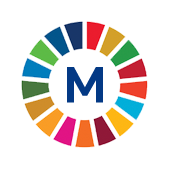 12.7.1 Implemented sustainable public procurement policies and action plansMetadataPeriod: AnnualYear: 2025 |
 12.7.1 Implemented sustainable public procurement policies and action plansMetadataPeriod: AnnualYear: 2025 |
| METADATA |
| Indicator information |
| Definition and methodology |
| Data source type and data collection method |
| Notes |
| ID of global indicator |
| Metadata update |
| Global metadata |
| Indicator information | Top |
| Indicator | |
12.7.1 Implemented sustainable public procurement policies and action plans | |
| Global indicator name | |
12.7.1 Number of countries implementing sustainable public procurement policies and action plans | |
| Target | |
12.7 Promote public procurement practices that are sustainable, in accordance with national policies and priorities | |
| Goal | |
Goal 12. Ensure sustainable consumption and production patterns | |
| Definition and methodology | Top |
| Definition | |
The indicator measures the number of countries implementing sustainable public procurement (SPP) through the implementation of policies and action plans, assessing the degree of implementation through an index. To produce the index, countries self-assess the following main elements:
| |
| Methodological explanations | |
The index aims to measure not only sustainable public procurement (SPP) but also green public procurement and socially responsible public procurement. However, these can be addressed in very different ways depending on the country. They can appear as a component of comprehensive policies such as sustainable development strategies, green economy roadmaps, etc. They can also be addressed directly by adopting a SPP action plan or policy, or through regulatory means, such as specific provisions in public procurement regulations.
As a result, it was decided to focus on process sub-indicators that would measure the resources and efforts that countries invest in implementing their PPA plans, policies and programs. | |
| Method of calculation | |
In order to assess the “number of countries implementing sustainable public procurement policies and action plans”, a certain threshold is foreseen above which a country will be considered to have a sound sustainable public procurement (SPP) policy or action plan, which is set to determine whether this country will be considered compliant with the indicator in the final calculation of SDG indicator 12.7.1.
The scoring ranges from 0 to 1, with a specific threshold above which a country is considered to have a sound SPP policy or action plan, considered aligned with SDG 12.7.1. indicator with a score of 1. | |
| Unit of measure | |
Score | |
| Available disaggregation | |
| Territorial level | |
Republic of Serbia | |
| Data source type and data collection method | Top |
| Data source | |
Public Procurement Office | |
| Periodicity of data collection | |
Every two years | |
| Notes | Top |
| ID of global indicator | Top |
C120701 | |
| Metadata update | Top |
| 25/6/2025 | |
| Global metadata | Top |
https://unstats.un.org/sdgs/metadata/files/Metadata-12-07-01.pdf | |